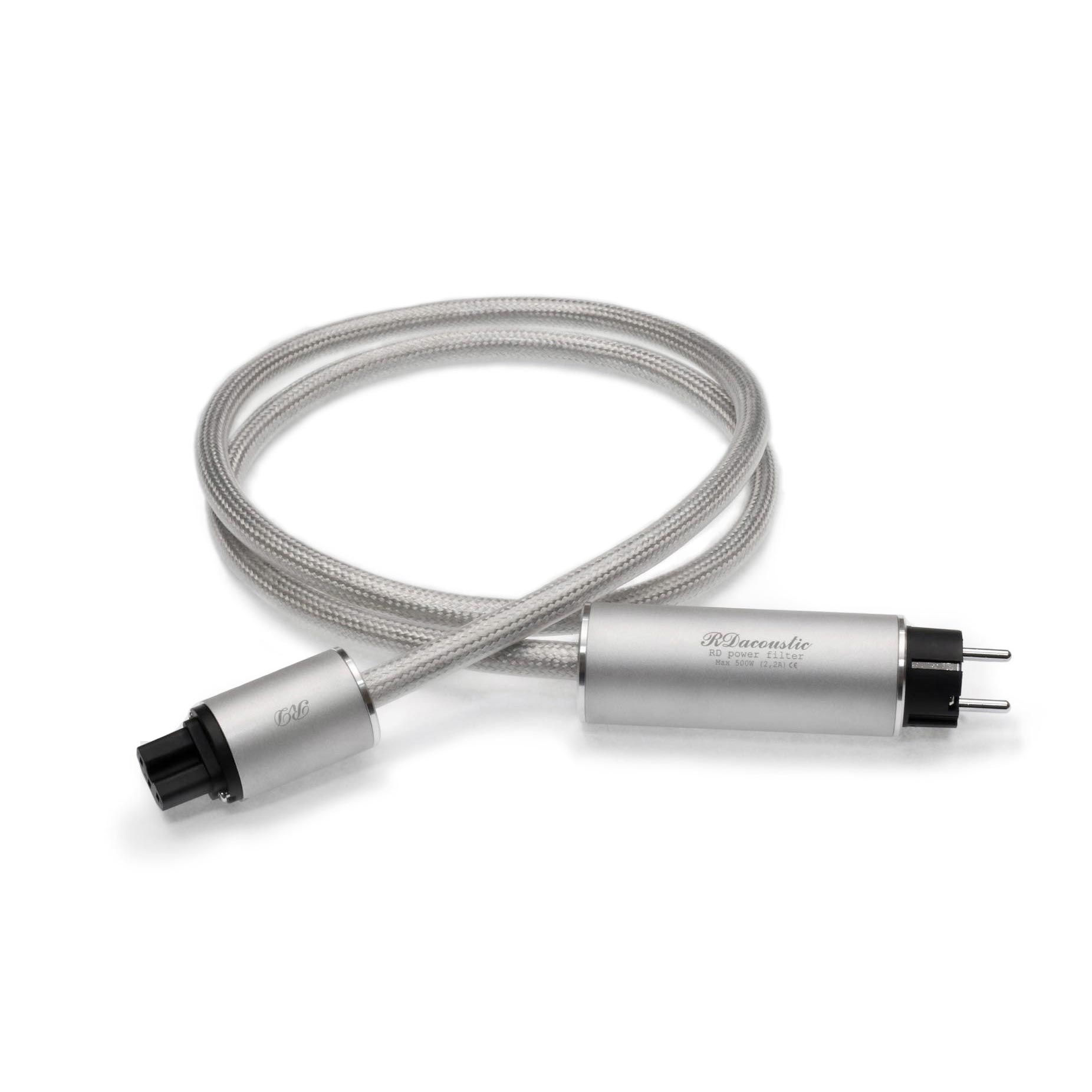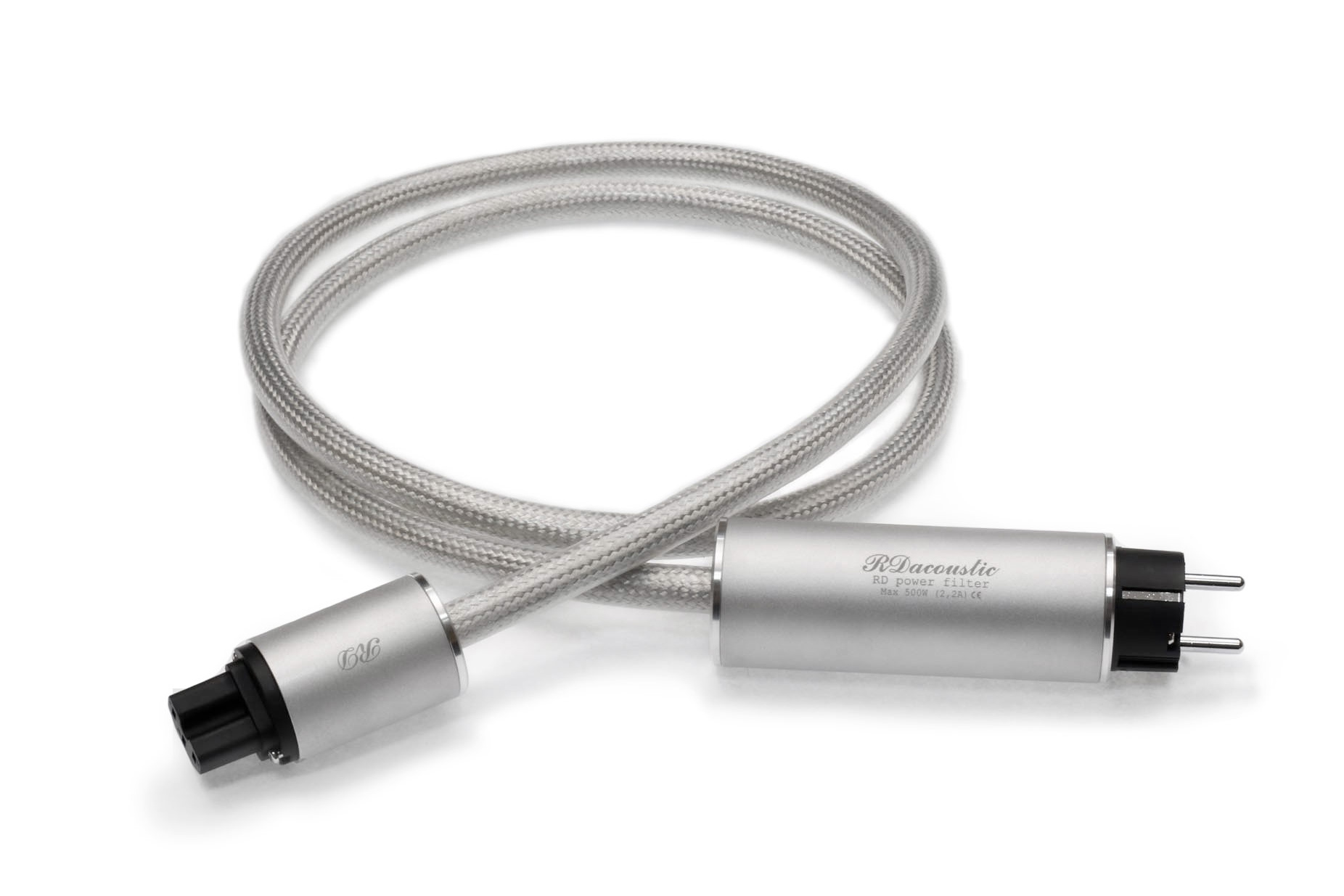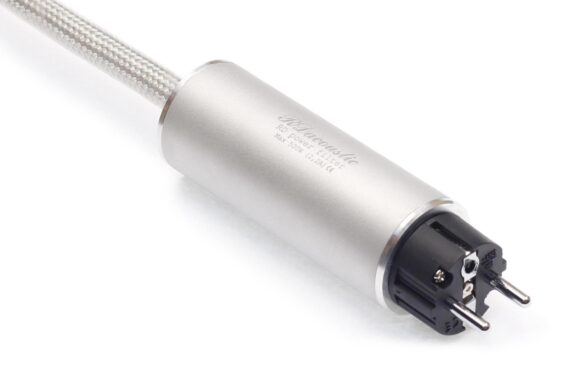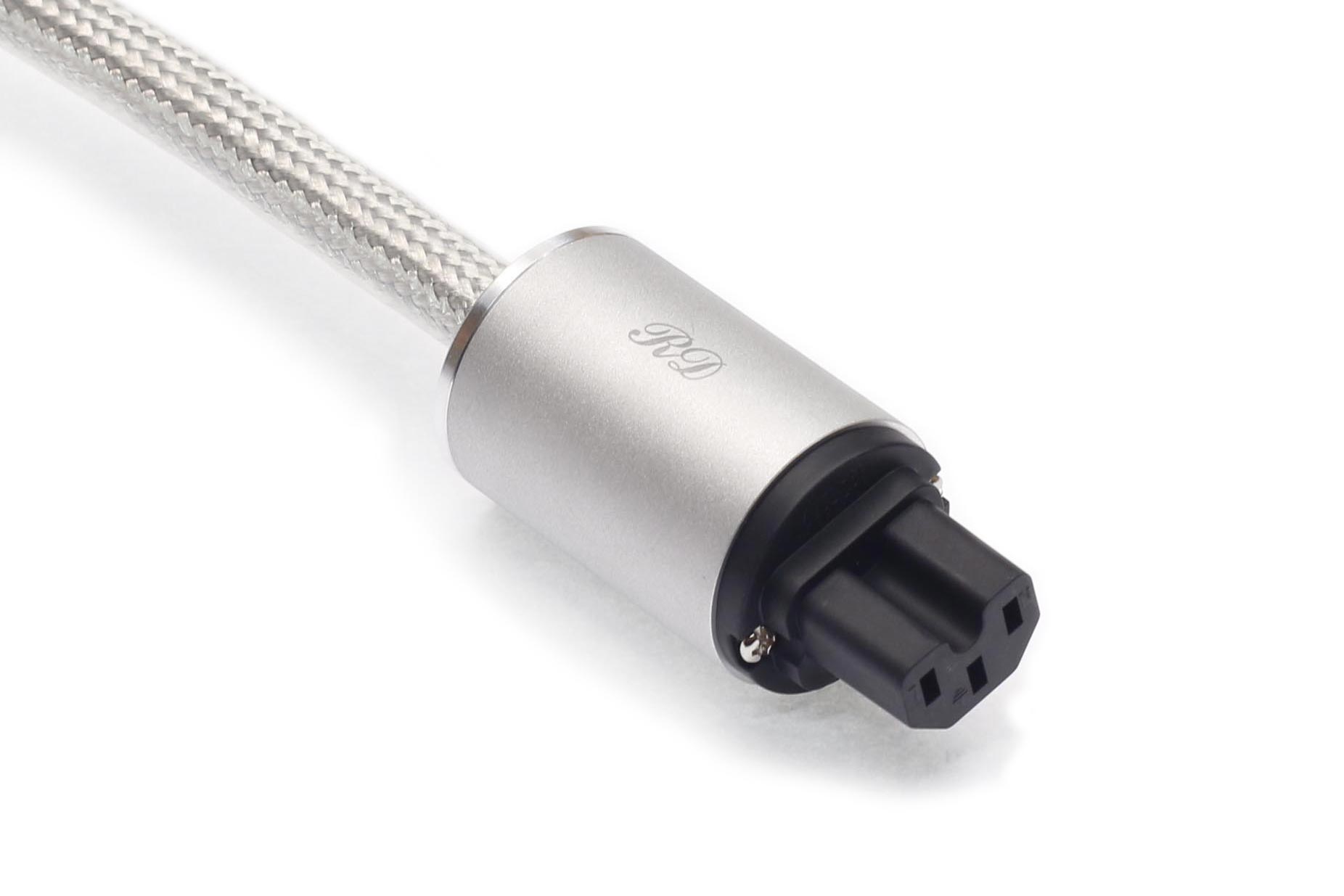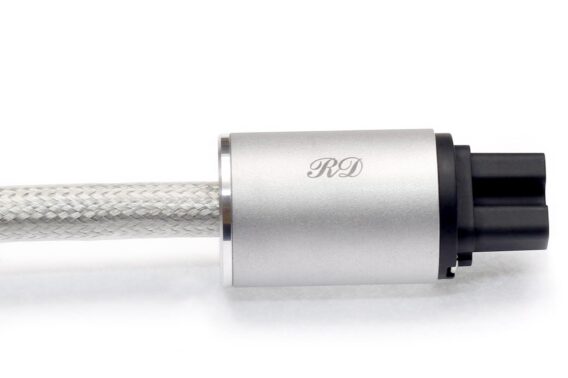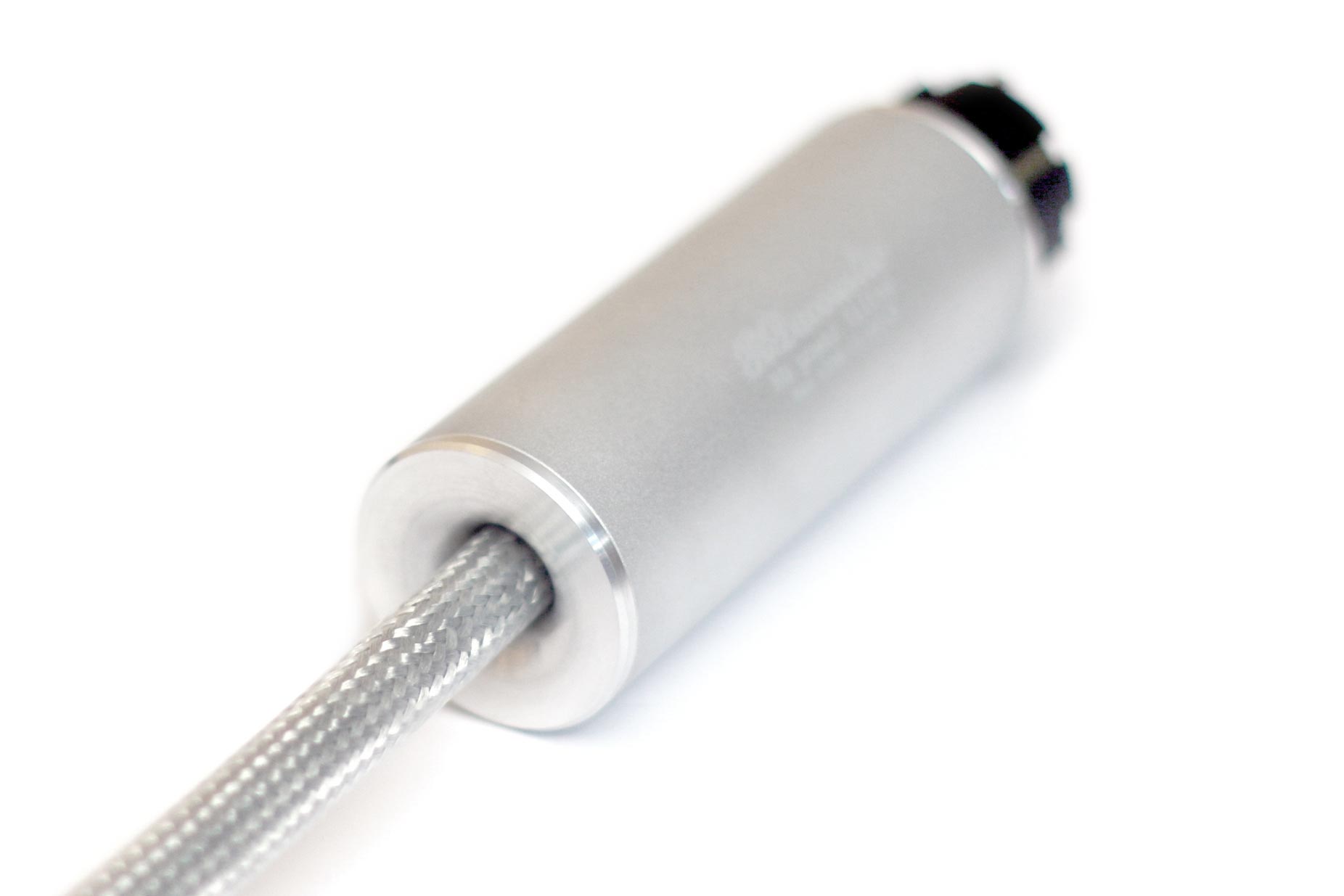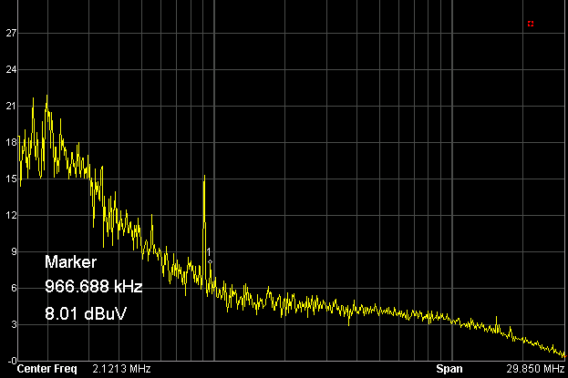RD Power Filter
Is a unique power filter combined with surge protection. This article from RDacoustic’s workshop effectively protects your audio appliances and other devices against overvoltage (lightning strikes and other causes) and at the same time cleans the power supply from unwanted electromagnetic interference, resulting in an improved sound quality of your audio devices.
Protect your devices the pure way.
RD Power Filter
This filter is assembled from components with very low production tolerances, the majority of which is manufactured in the Czech Republic. The filter is tested by standardised EU SURGE and BURST tests at the Military Technical Institute laboratory in Vyškov, Czech Republic. The quality of the components used and their tolerances are very important when it comes to how effective the filtering of high-frequency interference is as their parameters change with frequency. In chokes, we use special iron powder cores with a very wide working range. As a result, the filtration works effectively over a very wide range of frequencies, not leaving out harmonic frequencies of the suppressed frequencies.
At the beginning of our filter, there are two inductors to increase inner impedance and delay the rapidly growing current. Thanks to these, lightning arresters which follow can react faster. There are three rare gas-filled lightning arresters in a triangle, so the overvoltage is reduced between all conductors separately. What follows are another two inductors to reduce the impact of current, plus three fast and robust varistors, again in triangle. They suppress the leading edge of overvoltage that the lightning arresters didn’t filter out.
Then there’s a current compensated choke coil with a set of capacitors to reduce symmetrical interference—a balanced LC filter for high frequency interference. Ultra fast varistors which reduce any left overvoltage which came through the preceding stages close the filter up. The whole filter is shielded against high frequencies over 1 MHz.
This solution, which works at once as a filter, perfect surge protection and a cable, is primarily meant to provide power supply for one component (see Questions and Answers and technical parameters). Depending on how the entire audio system is meant to function, providing filtering and safe power to more components can be done either by using several RD Power Filters, or using one component (RD EMI Neutralizer).
Parameters
| Surge protection: | (LEMP – Lightning Electromagnetic Pulse) |
| Electromagnetic interference protection: | In accordance with the EMC standard |
| Fast transition pulses: | BURST |
| High energy pulses: | SURGE |
| Length: | 1,5 m |
| Weight: | 1 kg |
| European CEEe: | CEE 7/7 |
| Maximum pernament power: | 500 W |
| Maximum pernament current: | 2,2 A |
| Internal impedance: | 0,5 Ω |
| Maximum leaking current: | 0,075 mA |
| Power consumption: | 0,1 W |
| Isolation: | 4000 V |
| EMC filtration: | -17 dB (30 kHz–10 MHz) |
| Electromagnetic field protection: | 20 V/m |
| SURGE overvoltae protection: | 4500 V |
| SURGE short-circuit current: | 3x8000 A |
| BURST overvoltae protection: | 6000 V |
| BURST short-circuit current: | 3x6000 A |
Reviews and videos
For obvious reasons, rather than dealing with electromagnetic interference filtering and surge protection our filter is focused on, this review provides insight into the resulting sound our filter provides when used with different setups.
These are hifi enthusiast feelings, nothing measurable or in any way quantifiable. The high end system sounds a bit different (although it wasn’t bad before) now. The sound became clearer, perhaps the vocal and individual instruments now stand out more with quality recordings.
FAQ
Does a power filter really improve the quality of sound?
In short, yes. Even with the electromagnetic compatibility standards in place, high frequency interference still occurs. Although this interference is beyond the borders of hearable frequency, due to interference and modulation—that is by putting together random high frequencies—low, hearable frequencies develop. On our blog, you can find practical measuring tests and more information on filtration.
What is the EMC standard?
Every electronic device emits electromagnetic radiation. The EMC standard divides devices into defined groups and prescribes the boundaries for their emissions, susceptibility and immunity. You can read more on our Audio blog.
What is the reason for isolating a single cable instead of a multi-outlet strip?
Our solution—a proper surge protection in one capsule, has a disadvantage (as every other solution that there is). The filter has a relatively high internal resistance, which causes power loss. With the official limitations for transmitted power (500 W, 230 VAC), the filter transforms approx. 2 W into heat energy. The filter is okay with a constant 1000W load, however, the loss in heat would then be 4 W and it would have to have some cooling system. In our opinion, 500 W is more than enough for home audio.
That’s why with this solution, there can’t be an unlimited number of outlets. Providing more outlets while preserving other properties means a completely different solution, a different product intended for different needs.
Our filter is also a cable. This design means firstly: shielding from the filter all the way to the device, and secondly: more advanced filtering. To give an example: using two of our filters, filtering a DAC and a D class amplifier separately, aside from filtration of the outer power grid, you also get filtration between the two devices. With both devices in one common socket, you don’t filter the interference coming from the amplifier. The solution we offer is perfect in what it does.
Isn’t the wiring at a house supposed to stop any possible overvoltage?
The situation is more complex. Lightning strike accounts for most damage and destruction of electronic devices. The transients in question are too fast for a breaker or a tube fuse to take any action. A burning thread in the tube fuse forms plasma, which is conductive, and the pulse current in the order of thousands of amperes gets to the device.
There’s a norm for overvoltage protection (EN 61643-11:2012). If the wiring at a house is done in accordance with it, you should be protected against most types of overvoltage. The norm says that there have to be three stages of overvoltage protection. There should be at least at least 10 m of cable between each of them. That’s because with the jump in current (the upsurge in voltage is up to 1000 V/μs.), you need serial resistance and induction, so that the energy of the strike is distributed in such a way that each step of the protection functions with the kind of discharge it is constructed for. Were all the three stages put into one distribution board, for example, they wouldn’t work.
Our filter has all the three stages, inductors between them, so that it works in one capsule. The filter can repeatedly withstand 6000 V. If a strong lightning strikes into the nearby power grid and the pulse is higher than 6 000 V, the first pair of inductors unavoidably evaporate, but the connected device always stays protected (all the components are protected by a non-flammable material to prevent any chance of a fire). (The filter may withstand more, but firstly, there are no such tests and secondly, the values very much depend on the impedance of the power grid, so there must be sufficient reserve in the values we officially provide.) The norm for consumer electronics is generally 1000 V.
Newsletter
We'll let you know about our participation in audio shows, new reviews and products, new places to listen to your speakers, or new posts on our blog. We won't spam you.
